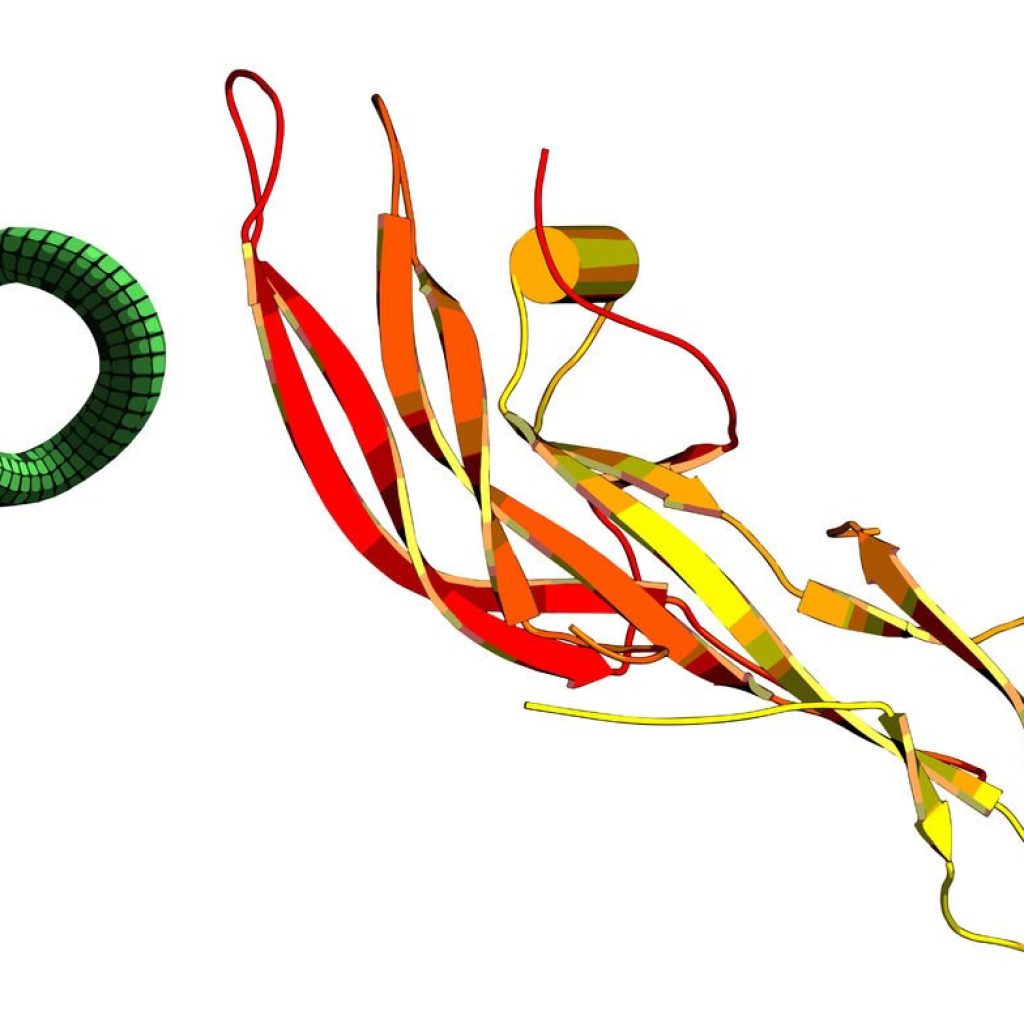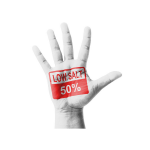Heather Aura Wdowin, NMD, CH
Patients are swarming into clinics hot for hCG (human chorionic gonadotropin), and it seems as though everyone and their brother in the naturopathic profession are offering hCG protocols during the recession to support themselves: I know my brother and I are. It may be hard to argue with Dr. Simeons making a fortune treating the rich and famous in the 1950s and ‘60s while clinically claiming an almost 100% “cure” rate. But is hCG naturopathic? Perhaps more importantly, are we doing it safely and correctly?
In Simeons’ time, obesity was relatively rare and found only in the idle rich who were exposed to processed, and hence relatively nutrient deficient foods. The “peasants” ate raw, high-fiber foods with low glycemic and allergic content, as well as worked at physically taxing professions and therefore, obesity was virtually nonexistent in that population. Dr. Simeons had an outdated view of endocrinology, including that of the thyroid and adrenal hormones not influencing fat in obesity. He also could not foresee what our pesticide, hormone, and heavy metal-laden environment would do to the human condition in the presence of rampant sugar and trans fat ingestion, uncontrolled inflammation and allergic states, and adrenal hormone deregulation from chronic stress and caffeine. Seems like the perfect storm, and something a heretofore-obscure pregnancy hormone cannot possibly “cure.”
So what did Simeons really say? Mobilizing fat that normally isn’t mobilized, hCG acts as a protective mechanism to ensure fetal growth and support. When the hypothalamus isn’t functioning correctly because of some previous stress, and weight loss isn’t working with diet and exercise, he saw a regulation of the “diencephalon” with hCG use.1 It is most effective with redistributing fat in people who have lost their essential fat, and look haggard in the face and around the ribs, while maintaining large amounts on the hips, belly, thighs, breasts, and arms. I personally have not had one patient come into my office who was on the brink of starvation from dieting while exercising and not losing weight. I have plenty who can’t lose as much weight as they wish from dieting and exercising, but often they haven’t addressed their hormones, food allergens, inflammation or the cause. We have an opportunity as NDs to help people make lifestyle changes, and while hCG may be a quick fix, it does not fix the underlying problem(s).
Reportedly, hCG suppresses hunger because of fat mobilization, and the 500-calorie per day diet can therefore be adhered to. However, it seems obvious that the severe caloric restriction is why the weight loss occurs, and according to some studies hCG did not promote weight loss any more than placebo. Nor did it significantly affect hunger, psychological state, the area where fat was burned, or fasting blood sugars.2-4 It may simply be the placebo effect that makes people believe they are not hungry while eating only 500 calories. In addition, claims have been made that areas of fat deposition in the body are metabolized differently and hCG helps burn fat in problem areas, such as the abdomen and thigh region while preserving organ-insulating fat. Adipose tissue is metabolized differently, depending on its location and other endocrine factors: “Decreased action of beta 2-adrenergic receptors and increased activity of alpha 2-adrenergic adrenoceptors in combination with defects in hormone sensitive lipase function inhibits the lipolytic effect of catecholamines in subcutaneous fat cells whereas increased activity of beta 3-adrenergic receptors and decreased activity of alpha 2 adrenoceptors augment the lipolytic response in visceral fat cells.”5
Simeons believed that supplementation wasn’t necessary because essential vitamins, minerals, and even amino acids were liberated from the fat stores. Unfortunately, what we are liberating from our fat stores today are pesticides, PCBs, solvents and heavy metals. In addition, the nutritional content of our foods have plummeted in the last 50 years.6 Therefore, as we all know, supplementation is extremely important because our foods no longer have the necessary nutrients.
Considering the current craze for hCG, and with patients educated by Wikipedia and other farcical internet sites, we have an opportunity to actually help patients make positive lifestyle changes based on real science, and the tenets of naturopathic medicine, even if the patient came through our doors for a quick fix fad.
Protocol for Patients Who Absolutely Insist
Tolle Causam
Phase 1
· Complete naturopathic intake, vitals, weight and body dimensions.
· Baseline laboratory testing: CBC, CMP, cellular micronutrient analysis, sex hormones, thyroid panel (including TSH, free T3, free T4, and reverse T3), CRP, vitamin D and any others deemed relevant to the clinical picture.
· Two weeks of a “detox phase” where the patient is educated on healthy diet and lifestyle choices, gets on a basic supplement program including protein, a green drink, B-complex with extra B6, essential fatty acids, a liver cleanse, and a probiotic while additionally receiving IV therapies, infrared saunas, and colonics.
Phase 2
· The initial dose is 125 IU hCG injected IM daily for 23 days while adhering to the 500 calorie diet. I remove bread from the diet, and allow them to eat from a list of vegetables. I also suggest continuing to use the protein powder and greens in the morning to help stabilize blood sugar. Coffee and black tea are not allowed, but I sanction green and white teas as beverages other than water. The EFAs are discontinued at this point, and I do suggest patients not use cosmetics, creams or oils, simply because I don’t want questions in their mind about absorbing fats through their skin inhibiting their weight loss. Herbally, I include ginger and fenugreek tea, and a liver cleanse in capsule form.
· We also do IVs specifically tailored to their underlying pathology, but a basic protocol for weight loss includes:
- 12.5 g ascorbic acid
- 2 cc B complex
- 4000 mcg B12
- 12 mEq bicarb
- 1 g calcium
- 40 mcg chromium
- 3 g magnesium
- 2cc methionine/inositol/choline in a 250 cc .45% NaCl bag
Phases 3 and 4
· At the end of the first cycle, a 6-week resting period is needed so the body does not become immune to the hCG. One may theoretically continue for another 23 days, 46 total, especially in the severely obese. But I prefer to give the body a rest from such severe caloric restriction, and resultant toxicity from lipolysis.
· The first 3 days immediately following the last day of Phase 2, the 500-calorie diet must be adhered to. Over the next 19 days of Phase 3, the patients are allowed to eat as much food as they like excluding processed foods and carbohydrates. Therefore, no sugar, dextrose, honey, corn syrup, molasses, synthetic sweeteners, starch, breads, pastas, wheat, rice, potatoes, yams, etc., and no trans fats or hydrogenated fats. After that, the remaining 3 weeks of Phase 4 consist of normal living, with healthy food and lifestyle choices suggested to them by their ND. You may increase the hCG dosage in the next cycle, if needed, by 25 IU up to 200 IU per day.
Praevenire
With information from the laboratory analysis at the beginning of the treatment, you have the opportunity to prevent further disease above and beyond the associated sequelae of obesity by converting the hCG weight loss patient into one who is utilizing the healing powers of naturopathic medicine.
Vis Medicatrix Naturae
When patients come in complaining that working out doesn’t have an effect, perhaps it is because during low-to-moderate exercise periods lipid mobilization in subcutaneous adipose tissue relies less on catecholamine-dependent stimulation than a decrease in plasma insulin.7 Also, the mobilization and use of fatty acids is greater in people with greater training.8 In the severely obese, the underlying mechanisms have been cultivated for years, and circulating insulin levels and insulin sensitivity take time to change in a positive manner even though the Western ego wants immediate and easy results. Commitment to training, healthy eating, and stress management are integral pieces to the obesity puzzle.
Tolle Totem
In Simeons’ time, he felt that “emotional” eating only accounted for 1% of obesity cases. In my American-based practice, I have seen many patients with a very clear link between emotional issues and their recalcitrant obesity. Louise Hay, author of books delineating the symbolic nature of disease and a proponent of mind/body medicine, writes that fat is protection against fear and insecurity, as well as being a cover for anger that has no healthy outlet.9 Our culture is teeming with people who self medicate abnormal brain chemistry and adrenal function with myriad over-the-counter methods, including carbohydrates, alcohol and caffeine. Balancing neurotransmitters with appropriate therapeutic methods will help address that cause. Acupuncture can help balance Qi flow between organs, eradicate phlegm and normalize function on an energetic level, and has been shown to be an effective treatment for obesity.10 Hypnosis and other mind/body healing techniques have proven effective in treating mental and emotional causes of overeating and obesity.11
Docere
We have a wonderful opportunity here to educate our patients about their unhealthy lifestyles. It is up to you to decide what is important for your patients to change in their lives in order to keep the weight off. Fast food, a sedentary lifestyle, and fluorescent lighting may be all you feel your patients should avoid.
Primum Non Nocere
Is hCG harmful? We don’t have reputable long-term studies showing its effects, and the dosage is high enough to give males a positive pregnancy test 5 days after they have an injection. In early pregnancy, hCG seems to be thyrotropic rather than stimulating to the diencephalon, increasing free T4 while suppressing TSH.12 Perhaps thyroid stimulation is in part responsible for the reported effects of hCG treatment causing the weight to stay off after the patient’s normal diet is resumed. Regardless, it seems as though Simeons’ science isn’t solid, and we must therefore question if we should be using his method. Also, it seems as though luteinizing hormone and hCG share a common receptor, and hCG is used to stimulate spermatogenesis in hypogonadism as well as reawakening the testes after a cycle of androgenic and anabolic steroids.13 It has also been found that hCG can increase the production of DHEA by the fetal adrenals, and has actions in the ovary and placenta related to angiogenesis and pregnenolone and progesterone synthesis.13 Women are advised to take hCG after stopping their menstrual cycle, perhaps to avoid ovarian hyperstimulation syndrome which may result when a woman is prone to increased vascular endothelial growth factor (VEGF) in the presence of hCG.13
We can see that hCG is hormonally active in several different tissues. In the face of endocrine complexity, we don’t know the full effects of administering an exogenous hormone, regardless of how mild mannered it seems. Simeons states that hCG will only restore normal function,1 but can he be trusted?
 Heather Aura Wdowin, NMD, CH is a general practitioner specializing in endocrinology and sports medicine. She is a certified hypnotherapist, and implements mind-body medicine into her practice along with herbal medicine, acupuncture, homeopathy, prolotherapy and other injection techniques, supplement programs, and IV therapies. Dr. Wdowin graduated from Cornell University with a BS in neurobiology and a concentration in sociology in an attempt to understand nature vs. nurture in the creation of human consciousness. She earned her NMD from SCNM in 2006, and her hypnotherapy certificate from SWIHA. Dr. Wdowin is chief medical officer for Bodhi Body Integrative Medical Centers in Chandler, Ariz.; owner of Ambrosia Medical in Scottsdale, Ariz.; and is currently an adjunct professor at South Mountain Community College, where she teaches anatomy and physiology.
Heather Aura Wdowin, NMD, CH is a general practitioner specializing in endocrinology and sports medicine. She is a certified hypnotherapist, and implements mind-body medicine into her practice along with herbal medicine, acupuncture, homeopathy, prolotherapy and other injection techniques, supplement programs, and IV therapies. Dr. Wdowin graduated from Cornell University with a BS in neurobiology and a concentration in sociology in an attempt to understand nature vs. nurture in the creation of human consciousness. She earned her NMD from SCNM in 2006, and her hypnotherapy certificate from SWIHA. Dr. Wdowin is chief medical officer for Bodhi Body Integrative Medical Centers in Chandler, Ariz.; owner of Ambrosia Medical in Scottsdale, Ariz.; and is currently an adjunct professor at South Mountain Community College, where she teaches anatomy and physiology.
References
1. Simeons ATW. Pounds and Inches: A New Approach to Obesity, 7th ed. Salvator Mundi International Hospital, Rome;1971.
2. Bosch B, Venter I, Stewart RI, Bertram SR. Human chorionic gonadotrophin and weight loss. A double-blind, placebo-controlled trial. S Afr Med J. 1990;77(4):185-189.
3. Greenway FL, Bray GA. Human chorionic gonadotropin (HCG) in the treament of obesity: a critical assessment of the Simeons method. West J Med. 1977;127(6):461-463.
4. Lijesen GK, Theeuwen I, Assendelft WJ, Van Der Wal G. The effect of human chorionic gonadotropin (HCG) in the treatment of obesity by means of the Simeons therapy: a criteria-based meta-analysis. Br J Clin Pharmacol. 1995;40(3):237-243.
5. Arner P. Differences in lipolysis between human subcutaneous and omental adipose tissues. Ann Med. 1995;27(4):435-438.
6. Davis DR, Epp MM, Riordan HD. Changes in USDA food composition data for 43 garden crops, 1950 to 1999. J Am Coll Nutr. 2004;23(6):669-682.
7. Moro C, Pillard F, de Glisezinski I, et al. Sex differences in lipolysis-regulating mechanisms in overweight subjects: effect of exercise intensity. Obesity (Silver Spring). 2007;15(9):2245-2255.
8. Coggan AR, Raguso CA, Gastaldelli A, Williams BD, Wolfe RR. Fat metabolism during high-intensity exercise in endurance-trained and untrained men. Metabolism. 2000;49(1):122-128.
9. Hay L. You Can Heal Your Life. Carlsbad, CA: Hay House. 1999:192.
10. Cho SH, Lee JS, Thabane L, Lee J. Acupuncture for obesity: a systematic review and meta-analysis. Int J Obes (Lond). 2009; 33(2):183-196.
11. Pittler MH, Ernst E. Complementary therapies for reducing body weight: a systematic review. Int J Obes (Lond). 2005;29(9):1030-1038.
12. Grün JP, Meuris S, De Nayer P, Glinoer D. The thyrotrophic role of human chorionic gonadotrophin (hCG) in the early stages of twin (versus single) pregnancies. Clin Endocr (Oxf). 1997;46(6):719-725.
13. Keay SD, Vatish M, Karteris E, Hillhouse EW, Randeva HS. The role of hCG in reproductive medicine. BJOG. 2004;111(11):1218-1228.





